Text
Navigating the Digital Cosmos: Exploring the Friendliness of Online Fandom Spaces for Asian Fans

In the ever-evolving landscape of digital communities, fandoms have emerged as dynamic spaces that transcend geographic boundaries, uniting individuals in shared passion and creativity. As we delve into the intricacies of online fandom, particularly for Asian fans, it becomes imperative to unravel how our social experiences are intertwined with social media platforms and the unique affordances they offer. Through this exploration, we will navigate the multifaceted nature of online fandom, considering both its friendly and toxic facets, with a focus on Asian fan communities.
Defining Fandom: More Than a Mere Obsession
Fandom, as Henry Jenkins posits, functions as an "alternative social community." It goes beyond the stereotypical portrayal of fans as mere consumers, delving into the realms of social belonging, community, and even activism. Understanding fandom requires acknowledging its diverse manifestations, extending far beyond the realms of K-pop or anime, encompassing various texts and content.
Fans, often dismissed as weird or obsessed, are, in reality, engaged participants in communal activities. Media studies, evolving from the recognition of audiences, now scrutinizes the practices of dedicated and loyal fan communities, highlighting the significance of understanding fan behaviors in the context of the creative industry and brand loyalty (Jenkins, 1992; Hills, 2002).

Fandom as a Participatory Culture: A Shift in Paradigm
Jenkins' work on fandom has transitioned from viewing fans as mere consumers to recognizing them as active participants in a participatory culture (Convergence Culture, 2006). This shift has been facilitated by changing media landscapes, multiple streaming services, and transmedia storytelling. Fans are now integral to the media landscape, with media industries designing products that invite fan participation.
The rise of participatory culture has made TV and films more fan-friendly, evident in phenomena like the Marvel Cinematic Universe (MCU). Social media, including platforms like Tumblr, Instagram, and TikTok, has played a pivotal role in enabling fans to engage in communal spaces both online and offline. Participatory culture not only invites fans into the narrative but also empowers them to amass massive support, as seen in the fervor of K-pop fandoms.
Case Study: Thai Fandom on Twitter
To delve deeper into the dynamics of online fandom for Asian fans, let's turn our attention to a case study on Thai fandom (Smutradontri & Gadavanij, 2020). This study explores how Thai fans engage with fan text on Twitter, emphasizing the creation of fan text as a way of demonstrating dedication and passion. The analysis reveals five types of fan tweets, including hypothetical interpretation, fan art, narratives concerning source texts, expressions of personal opinions and feelings, and fan parody.
Notably, this study sheds light on the creation of a shared lexicon, termed 'fan talk,' and how fans position themselves as relatives and friends of the source texts. The study also highlights the humorous nature and transcultural elements found in fan tweets, especially the 'Thai-ifize' method used by fans.

Media Affordances: A Double-Edged Sword
The digital era has bestowed fans with the power to form communities online based on shared interests, giving rise to a myriad of opportunities. Social media platforms, such as Tumblr and Twitter, offer spaces for fandom expression and even social and political activism. However, the same platforms can also be breeding grounds for toxicity, exemplified by instances in K-pop and C-pop fandoms.
The phenomenon of 'spreadable media,' as described by Jenkins, Ford, and Green (2013), underscores the ability of fans to easily share content. Fan voices, when part of a collective, become powerful tools for raising awareness, as seen in campaigns against issues like whitewashing. Nevertheless, this participatory nature can also be exploited for free labor, raising questions about the ethics of such engagement.
Conclusion: Navigating the Cosmos
In conclusion, the exploration of online fandom for Asian fans unveils a complex tapestry of social experiences, woven through the affordances of social media platforms. The case study on Thai fandom illuminates the positive aspects of fan engagement, from the creation of diverse fan texts to the formation of a shared lexicon. However, the darker side, characterized by toxic fandom and the potential for online spaces to breed toxicity, cannot be ignored.
As we navigate the digital cosmos of online fandom, it becomes crucial to consider the ethical implications of fan engagement and the responsibility of social media platforms in fostering both friendly and safe spaces. The journey through fandom is not only a reflection of cultural passion but also a call for thoughtful examination of our roles as digital citizens in these dynamic online communities.
Hope to see you in the next one!
References:
Gray, J. (2003). New audiences, new textualities: Anti-fans and non-fans. International Journal of Cultural Studies, 6, 64–81, viewed 26 November 2023.
Gray, J., Sandvoss, C., & Harrington, C. L. (2007). “Introduction” in Fandom: identities and communities in a mediated world. NYU Press, New York, pp. 1-16, viewed 26 November 2023.
Hills, M. (2002). Fan cultures. Routledge, London, viewed 26 November 2023.
Ito, M. (2008). “Introduction” in Kazys Varnelis (ed.) Networked Publics. MIT Press, Cambridge, MA., viewed 26 November 2023.
Jenkins, H. (1992). Textual poachers: Television fans & participatory culture. Routledge, New York., viewed 26 November 2023.
Jenkins, H. (2006). Convergence culture: where old and new media collide. NYU Press, New York., viewed 26 November 2023.
Jenkins, H. (2006). When fandom goes mainstream. Confessions of an Aca-Fan. , viewed 26 November 2023. <http://henryjenkins.org/blog/2006/11/when_fandom_goes_mainstream.html>
Jenkins, H., Ford, S., Green, J. (2013). Spreadable media: creating value and meaning in a networked culture. NYU Press, New York, viewed 26 November 2023.
Kresnicka, S. (2016). Why understanding fans is the new superpower (guest column). Variety, viewed 26 November 2023. <https://variety.com/2016/tv/columns/understanding-fans-superpower-troika-1201743513/>
Smutradontri, P., Gadavanij, S. (2020). Fandom and identity construction: an analysis of Thai fans’ engagement with Twitter. Humanit Soc Sci Commun 7, 177, viewed 26 November 2023. <https://doi.org/10.1057/s41599-020-00653-1>
0 notes
Text
Navigating the Maze of Crowdsourced Information in the Era of Fake News

In an era dominated by digital communities and the surge of information-sharing, the role of crowdsourcing has become indispensable. From aiding disaster response efforts to fostering innovation through platforms like Lego Ideas, crowdsourced information has woven itself into the fabric of our digital existence. However, this symbiotic relationship between digital communities and crowdsourcing is not without its challenges, and one of the most pressing issues of our time is the proliferation of fake news.

The Historical Context of Crowdsourcing:
Crowdsourcing is not a novel concept. As early as 1714, the British government used crowdsourcing to solve the longitude problem, demonstrating the power of collective problem-solving. Today, digital platforms and networks have amplified the practice of crowdsourcing across various communities, from activists to gamers, creating a dynamic landscape of communication and information exchange (Chrum, 2013).
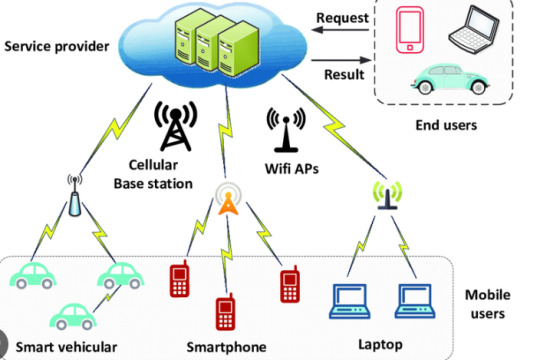
The Evolution of Crowdsourcing Networks:
Digital communities operate within different network structures, ranging from centralized message boards to decentralized peer-to-peer sharing. The rise of new social media platforms, such as Mastodon and CounterSocial, reflects a shift towards decentralized networks. Additionally, technologies like blockchain not only enhance privacy and security but also enable crowdfunding, highlighting the multifaceted nature of crowdsourced information (Chin et al., 2014).
Crowdsourcing in Times of Crisis:
The impact of crowdsourcing is particularly evident during crises. During the early days of the COVID-19 pandemic, expert crowdsourcing played a crucial role in understanding the virus. Social network sites served as vital platforms for information dissemination and community action (Chin et al., 2014). Witness the fundraising efforts for earthquake victims in Palu, Indonesia, and the White flag movement in Malaysia during the COVID-19 lockdown.
Social Media and Disaster Sense-Making:
Social networking sites, like Tumblr, are not just information hubs but also spaces where individuals and groups make sense of events and experiences. The immediacy of witness-generated content, including mobile footage and images shared on platforms like Twitter, has reshaped the landscape of disaster reporting. Citizen journalism has become a powerful force, altering the traditional dynamics of information flow during crises (Horbury & Hughes, 2010).

Crowdsourcing vs. Fake News:
As crowdsourced information gains prominence, it encounters a formidable adversary—fake news. A comprehensive review by Aïmeur, Amri, and Brassard (2023) delves into the challenges of identifying and combatting fake news on online social networks. The deceptive nature of fabricated content, the dynamicity of online platforms, and the quality of existing datasets pose significant hurdles.
The Complexity of Crowdsourced Information:
In the realm of crowdsourced information, the complexities deepen when confronted by the pervasive influence of fake news. The term "crowdsourcing" itself, coined by Jeff Howe in 2006, initially celebrated the collaborative wisdom of user-generated content, ushering in a new era for various creative industries. However, the very platforms that enable crowdsourcing have become battlegrounds where misinformation seeks to exploit the collaborative spirit. Take, for instance, the Lego Ideas platform, where participation is incentivized, and ideas are crowdsourced, but this openness also invites the challenge of discerning genuine innovation from deceptive content (Howe, 2006).
The Unrelenting Challenge:
As we grapple with the unrelenting challenge of fake news, the review by Aïmeur, Amri, and Brassard (2023) calls attention to the limitations of artificial intelligence (AI) approaches. Despite leveraging machine learning and deep learning, AI struggles to distinguish fake content designed to closely mimic the truth. The consequences are profound, as fake news not only misguides but erodes the trust that communities place in crowdsourced information.
Towards Informed Collaboration:
In our pursuit of a digital landscape characterized by informed collaboration, it becomes imperative to recognize the symbiotic relationship between social media, crowdsourced information, and the challenges posed by fake news. We must collectively foster an environment where the benefits of crowdsourcing thrive, yet remain resilient against the insidious influence of misinformation. This requires continual vigilance, critical thinking, and a commitment to amplifying the authenticity of the information we collectively curate and disseminate.

Conclusion: Navigating Responsibility in the Digital Landscape
As we navigate the complexities of crowdsourced information amid the growing threat of fake news, the imperative to tread responsibly becomes clear. The evolution of crowdsourcing has redefined collaboration, but the insidious spread of misinformation challenges the authenticity of shared knowledge (Chin et al., 2014).
In facing the persistent challenge of distinguishing truth from deception, we must acknowledge the limitations of current technological solutions. Artificial intelligence, though powerful, struggles with the intricacies of human ingenuity in crafting deceptive content (Aïmeur, Amri, & Brassard, 2023). Thus, the responsibility lies not only in advanced algorithms but in the collective wisdom of digital communities.
Embracing informed collaboration requires continual vigilance and a commitment to upholding the integrity of shared knowledge. In this dynamic landscape, our collective responsibility is to foster an environment where authenticity prevails. Safeguarding the transformative power of crowdsourced information necessitates collaborative discernment to counter the pervasive influence of misinformation.
See you guys in the next one!
References:
Bennett, L., Chin, B., & Jones, B. (2015) 'Crowdfunding: A New Media & Society special issue', New Media & Society, 17(2), 141–148. DOI: 10.1177/1461444814558906, viewed on 25 November 2023.
Brabham, D.C. (2013) Crowdsourcing, Cambridge, MA: MIT Press.
Chrum, A. (2013) 'The long history of crowdsourcing and why you’re just now hearing about it', CrowdSource, viewed on 25 November 2023. <https://www.crowdsource.com/blog/2013/08/the-long-history-of-crowdsourcing-and-why-youre-just-now-hearing-about-it/>
Chin, B., Jones, B., McNutt, M., & Pebler, L. (2014) 'Veronica Mars Kickstarter and crowdfunding', Transformative Works and Cultures, 15, viewed on 25 November 2023. <https://doi.org/10.3983/twc.2014.0519.>
Horbury, A., & Hughes, P. (2010) 'Popular Knowledge and Performances of the Self in Distributed Networks: Social Media after Black Saturday', Media International Australia, 137(1), 144–153. DOI: 10.1177/1329878X1013700116., viewed on 25 November 2023.
Howe, J. (2006) 'The Rise of Crowdsourcing', Wired. Available at: https://www.wired.com/2006/06/crowds/., viewed on 25 November 2023.
Peters, M.A. (2015) 'Interview with Pierre A. Lévy, French philosopher of collective intelligence', Open Review of Educational Research, 2:1, 259–266. DOI: 10.1080/23265507.2015.1084477., viewed on 25 November 2023.
0 notes
Text
Is social media useful in spreading information on COVID-19 in Malaysia?

In the tumultuous landscape of the 21st century, our lives have become increasingly intertwined with the digital fabric of social media. Beyond being mere platforms for personal expression, these digital realms have assumed a critical role in shaping public narratives, especially in the context of public health crises. The advent of the COVID-19 pandemic thrust the world into uncharted territory, where the dissemination of accurate information became as crucial as implementing health measures. This post seeks to delve into the multifaceted relationship between social media and the COVID-19 pandemic in Malaysia, unravelling the intricate interplay between our social experiences, the affordances of these platforms, and the ways in which we navigate the infodemic.

The Evolution of Social Media in Public Health Campaigns
Public health, as defined by Winslow in 1920, is the "science and art of preventing disease, prolonging life, and promoting health through organized efforts." Fast forward to the digital era, where social media has become a conduit for education, outreach, and tracking during global health crises, exemplified by the ALS Ice Water Bucket Challenge and the 2020 handwashing campaign by the NHS in the UK.
Malaysia, in its response to the COVID-19 pandemic, witnessed the evolution of the MySejahtera app, transitioning from a mere tracking tool to a comprehensive disease management platform. However, this raises questions about data privacy and security, underscoring the delicate balance between public health vigilance and individual privacy concerns.
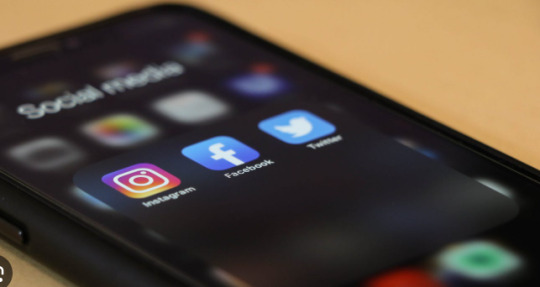
Unpacking Digital Health and Social Media's Impact
The rise of digital health from 2005 to 2013 coincided with the proliferation of social media platforms. Online health publics, a term encapsulating our propensity to consult Google for health-related issues, illuminate the profound impact of the internet on our health understanding. The influx of health information through various social channels, including WhatsApp messages, highlights a shift in how we access and share vital health-related insights.
Yet, a critical question emerges: Can we believe all that we encounter on these platforms? The authenticity of health information disseminated on social media remains a persistent concern, with 80% of American internet users seeking health information online, according to Fox (2011).
Social Media's New Dimensions in Health Communication
Social media introduces novel dimensions to health communication, encompassing both public health campaigns and personal experiences. Health and illness narratives are becoming increasingly public, blurring the lines between personal and communal well-being. Blogging illness, for instance, serves as a conduit for individuals to record experiences, connect with others, and navigate the complex terrain of illness management.
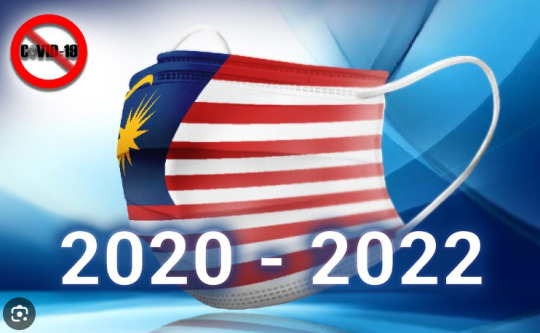
The Malaysian Landscape: Social Media and COVID-19
In Malaysia, the Ministry of Health's proactive approach to share raw data on GitHub is a commendable effort in combating misinformation. The use of social media platforms to disseminate information not only spreads awareness but also strengthens community ties, especially evident in the creation of Facebook groups, Instagram hashtags, and WhatsApp messages during lockdowns.
However, the darker side of social media in the context of mental health becomes apparent. Despite strides in recognizing the importance of mental health, stigmas persist, and social media can become a battleground for mental health issues, as evidenced by Instagram's #depression trend.
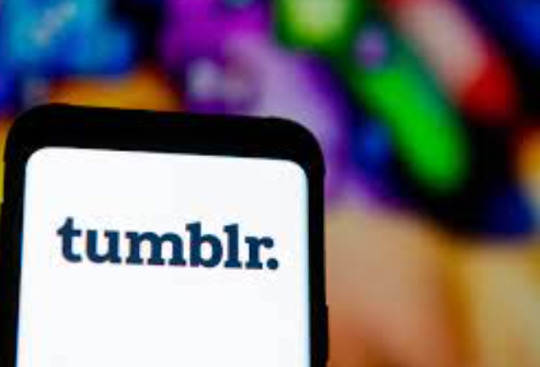
Case Study: Mental Health Activism on Tumblr
Platforms like Tumblr host vibrant communities engaged in mental health activism. Projects like To Write Love on Her Arm (#TWLOHA) and Project Semicolon utilize visual cultures to communicate messages, working both with and against social media's visual representations of mental illness and self-harm.
Overarching Benefits of Social Media in Public Health
A systematic review by Moorhead et al. (2014) outlines six overarching benefits of social media in public health:
Increased interactions with others
2. More available, shared, and tailored information
3. Increased accessibility and widening access to health information
4. Peer/social/emotional support
5. Public health surveillance
6. Potential to influence health policy
The Malaysian Scenario: Insights from Research
Rashid et al.'s study (2021) delves into the impact of social media on health knowledge and behavior regarding COVID-19 in Malaysia. The study emphasizes the role of social media in disseminating proper and timely information while acknowledging the need for proactive research and health policies.
Conclusion
As we navigate the intricate interplay between social media and COVID-19 in Malaysia, it is evident that these platforms are not merely channels for information dissemination but dynamic spaces shaping public health narratives. We must tread cautiously, recognizing the potential benefits while remaining vigilant against the pitfalls of misinformation. The role of social experiences in this digital landscape is pivotal, urging us to be discerning consumers, active participants, and advocates for a healthier digital discourse.
See you guys in the next one!
References:
Appadurai, A. (1996). Modernity at Large: Cultural Dimensions of Globalisation. Minnesota: University of Minnesota Press, viewed on 15 November 2023.
Fox, S. (2011). The Social Life of Health Information. Pew Research Centre, viewed on 15 November 2023. <https://www.pewresearch.org/internet/2011/05/12/the-social-life-of-health-information-2011/>
Keiles, J. (2015). Depressiongrams: A Photo Essay. Medium, viewed on 15 November 2023. <https://medium.com/message/depressiongrams-7f22011d6113>
Moorhead, S. A., Hazlett, D. E., Harrison, L., Carroll, J. K., Irwin, A., Hoving, C. (2013). A New Dimension of Health Care: Systematic Review of the Uses, Benefits, and Limitations of Social Media for Health Communication. Journal of Medical Internet Research, 15(4), e85. DOI: 10.2196/jmir.1933, viewed on 15 November 2023.
Rashid, A. A., Mohamad, I., Mohd Haris, A. F. (2021). The Role of Social Media in Making an Impact to Health Knowledge and Behaviour on COVID-19 in Malaysia. Malays J Med Sci, 28(3), 155-157. DOI: 10.21315/mjms2021.28.3.15, viewed on 15 November 2023.
Swinburne University. (n.d.). MDA20009 Digital Communities: Week 7 - Public Health Campaigns [Lecture slides], viewed on 15 November 2023.https://swinburnesarawak.instructure.com/courses/839/pages/week-7-lecture-slides?module_item_id=56243
Winslow, C.-E. A. (1920). The Untilled Fields of Public Health. Science, 51, 23-33, viewed on 15 November 2023. <https://doi.org/10.1126/science.51.1306.23>
0 notes
Text
The Impact of Fake News and Propaganda on Social Media Activism: Unraveling the 5G-COVID-19 Myth

In the dynamic realm of activism and protest, the integration of social media has become both a catalyst and a challenge. As we navigate the intricate relationship between social media, activists, and the dissemination of fake news and propaganda, a pressing question arises: How do misinformation and propaganda, exemplified by the 5G-COVID-19 myth, impact the use of social media by activists and protesters? To unravel this complex web, we will explore various forms of activism, critique the concept of 'clicktivism,' and scrutinize the implications of digital citizenship. But first, let's delve into the global contexts that have seen social media emerge as a powerful tool for change.

The Global Dynamics of Activism & Protest
Activism and protest have undergone a transformation in the digital age, finding new avenues for expression and mobilization through social media platforms. From the fall of the Berlin Wall to the Tiananmen Square Massacre in 1989, we contemplate how these historic events might have played out differently if social media had been present. Social media, as highlighted in TIME magazine in 2011, has become a powerful tool for 'everyday activism,' 'subactivism,' and 'culture jamming.'

Digital Citizenship and Civic Cultures
The concept of digital citizenship extends the traditional notions of civic participation to the online realm. In the words of Marshall (1992), all members of a political community have certain rights, and the internet, much like education, has the potential to promote democracy and civic duty. The role of media, encompassing not only traditional outlets but also social media and pop culture, becomes crucial in shaping civic cultures. The question emerges: does the internet truly afford us the opportunity to learn about citizenship and civic duty?
Alternative & Activist Media in the Digital Age
Leah Lievrouw (2011) points out that there are unprecedented opportunities for expression and interaction among activists, facilitated by new media tools. Social media allows activists to build and sustain communities without geographical restrictions, gain visibility and voice, resist dominant views, and present alternative perspectives legitimately. The concept of 'networked publics' is crucial in understanding the digital authoring and distribution tools that social media provides.

Case Study: Hong Kong Protests
Examining the role of social media and messaging apps in the Hong Kong protests provides a real-world example. The Wall Street Journal highlights how online protests facilitated and aided offline movements. The Umbrella Movement in 2014 and the Anti-Extradition Protests in 2019-2020 demonstrated the power of social media in mobilizing and organizing protests for civil rights, freedom, and democracy.
The Mobile Witness & Networked Events
The emergence of the mobile witness, characterized by eyewitness accounts through videos and photography, has become a significant aspect of protests and movements. Social media, with its ability to bring the collectivity of shared events to the forefront, has transformed how we perceive and engage with global events. From the Black Lives Matter protests in the United States to the England Riots in 2011, social media has played a pivotal role in shaping narratives.

The Infodemic: 5G and COVID-19
In the midst of these digital transformations, misinformation and fake news have become rampant. The rumor linking 5G technology to COVID-19 serves as a poignant example. A research team led by Elaine Nsoesie investigated the spread of COVID-19 misinformation using epidemiological techniques. They found that the myth of "COVID-19 and 5G" spread faster than other rumors, indicating a global misunderstanding of 5G technology.
Debunking the 5G-COVID-19 Myth
Despite the fear surrounding 5G technology, it does not cause COVID-19. Researchers emphasize the need to understand how misinformation spreads to counteract it effectively. David Starobinski, a professor at the BU College of Engineering, clarifies that 5G is an evolution, not a revolution, in communication technology. The spread of such myths underscores the importance of transparency from researchers and institutions.
Criticisms and Challenges in Social Media Activism
The article concludes by addressing criticisms of social media activism, including the concept of 'clicktivism.' While some argue that it fosters a lazy form of activism, research suggests that it has the potential to create awareness and draw attention to overlooked issues. Additionally, the notion of 'subactivism' is explored, recognizing its importance in everyday democratic participation.
Conclusion
As social media continues to shape the landscape of activism and protest, it is crucial to navigate the complexities of fake news and propaganda. The case of the 5G-COVID-19 myth highlights the need for a nuanced understanding of digital citizenship and media literacy. Activists must harness the power of social media while remaining vigilant against misinformation, ensuring that the digital realm remains a force for positive change in the world.
See you guys in the next one!
References:
Bakardjieva, M. (2009) "Subactivism: Lifeworld and Politics in the Age of the Internet," The Information Society, 25, pp. 91-104, viewed on 20 November 2023.
Dahlgreen, P. (2009) "Media and Political Engagement: Citizens, Communication, and Democracy," Cambridge: Cambridge University Press, viewed on 20 November 2023.
Ito, M. (2008) "Introduction' in Kazys Varnelis (ed.) 'Networked Publics," Cambridge: MIT Press, viewed on 20 November 2023.
Lievrouw, L. (2012) "Alternative & Activist New Media," London: Polity Press, viewed on 20 November 2023.
Massumi, B. (2009) "National Enterprise Emergency: Steps Toward an Ecology of Powers," Theory, Culture & Society, 26(6), pp. 153–185. doi: 10.1177/0263276409347696, viewed on 20 November 2023.
Tufekci, Z., & Wilson, C. (2012) "Social Media and the Decision to Participate in Political Protest: Observations From Tahrir Square," Journal of Communication, 62(2), pp. 363-379, viewed on 20 November 2023. <https://doi.org/10.1111/j.1460-2466.2012.01629.x>
Nsoesie, E., Cesare, N., et al. (2020) "5G Doesn’t Cause COVID-19, But the Rumor That It Does Spread Like a Virus," Journal of Medical Internet Research, viewed on 20 November 2023. <https://www.bu.edu/sph/news/articles/2021/5g-doesnt-cause-covid-19/>
0 notes
Text
Is blogging still relevant in the age of TikToks and Instagram?
What is blogging? The first blog that is generally recognized was "links.net." It was created by Justin Hall while he was a student at Swarthmore College in the United States in 1994. Blogger, a popular early blogging platform, was developed by Pyra Labs. In 2003, Blogger was purchased by Google, followed by the acquisition of Picasa, a photo organizer and editing app, in 2004. Now, let's go into the heart of the matter – what exactly is blogging?
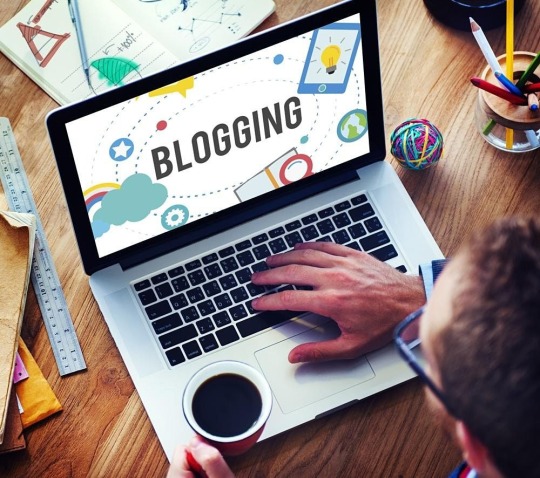
Blogging: The Foundation of Online Expression
Blogging is the process that involves creating and sharing articles, photos, and various forms of content through a dedicated website or blog. It has been a cornerstone of online communication and expression for nearly three decades. However, with the meteoric rise of short-form video platforms like TikTok and visually driven platforms like Instagram, some have questioned whether blogging still holds its relevance in the digital landscape.

The Rise of Short-Form Content
Platforms like TikTok and Instagram have certainly transformed the way we consume and create content. TikTok, with its snappy, user-generated videos, has amassed millions of users in record time. Instagram, on the other hand, has revolutionized photo-sharing, filters, reels, and storytelling with its visually appealing grid-style posts and Stories feature. These platforms cater to our shrinking attention spans in an era defined by instant gratification and information overload. According to research on 'The World's Most Used Social Platforms' (Ranking of Social Media Platforms by Global Active User Figures, in Millions), Instagram ranks 4th, while TikTok ranks 6th. This shows that the use of these platforms is growing quickly in this era.

The Unique Strengths of TikTok and Instagram
TikTok and Instagram offer compelling advantages – they're highly engaging, easy to use, and capitalize on visual appeal. TikToks are bite-sized pieces of entertainment, often filled with humour, creativity, and quick takeaways. One of TikTok's notable features is its extensive library of filters and effects that enable users to transform their videos in various imaginative ways. These filters add an extra layer of creativity and fun to the content, making it even more captivating.
Instagram, on the other hand, provides a visual diary of people's lives, offering an intimate glimpse into their world through photos and stories. Instagram's filters are renowned for enhancing the visual quality of images and videos, allowing users to express their unique style and aesthetic. The platform's reels feature, which lets users create short video clips with music, has also contributed to its popularity.
Additionally, both TikTok and Instagram leverage the power of music to captivate audiences. The carefully curated soundtracks and the ability to add catchy tunes to videos have made these platforms a haven for music enthusiasts and budding creators alike. The music choices often sync seamlessly with the content, creating an immersive experience that resonates with users and keeps them coming back for more. This marriage of visual content with brain-catching music has become a defining characteristic of these platforms, loved by people of all ages and backgrounds in today's digital landscape.

Blogging: Where Depth Meets Influence
In a world of quick content, blogging remains a sanctuary for depth and impact. It allows thought leaders, experts, and enthusiasts to explore topics comprehensively, sharing profound insights and perspectives.
Blogs excel in search engine rankings, ensuring a steady influx of organic traffic over time. They are the cornerstone of trust and credibility, creating a devoted readership that values well-researched, thoughtful articles.
What sets blogging apart is its timeless value. Unlike the fleeting nature of social media posts, blog content endures, continuing to attract visitors and staying discoverable long after publication. This lasting impact opens doors to various monetization avenues, from advertising and affiliate marketing to product sales and services.
Furthermore, blogging offers complete ownership and control. Bloggers are free from the uncertainties of constantly evolving social media algorithms and policies. As if that weren't enough, blogging and social media go hand in hand. By strategically integrating platforms like TikTok and Instagram, bloggers can effectively promote their content and connect with a broader, engaged audience. This synergy solidifies blogging's relevance and influence in the digital landscape.

Conclusion: The Power of Balance
In the age of TikToks and Instagram, blogging isn't overshadowed; it's complemented. Each medium has its unique strengths and audiences. Successful content creators and brands often employ a balanced approach, utilizing short-form content on social media to capture attention and redirecting interested audiences to their blogs for deeper engagement. In essence, blogging's resilience lies in its ability to offer a haven for substantial, well-crafted content that continues to inform, inspire, and connect with audiences in a world where attention spans may be shrinking but curiosity and thirst for knowledge remain unquenched. So, is blogging still relevant? In a resounding echo of its own essence, the answer is a resounding yes!
See you guys in the next one!
References:
Blogging, (n.d.), In SendPulse Glossary, view 29 September 2023, <https://sendpulse.com/support/glossary/blogging#:~:text=Blogging%20is%20the%20process%20that,high%20level%20of%20customer%20engagement.>.
TikTok vs. Instagram: What You Need to Know, (n.d.), SocialBee Blog, view 29 September 2023, <https://socialbee.com/blog/tiktok-vs-instagram/#:~:text=How%20Is%20TikTok%20Different%20from,videos%20through%20the%20IGTV%20feature)>.
Social Media Sites: The 15 Most Popular Platforms in 2023 [Data], (n.d.), Buffer Blog, view 29 September 2023,
< https://buffer.com/library/social-media-sites/#:~:text=1.,world's%20population%20are%20Facebook%20users>.
Short-Form Content: The Benefits, Limitations & Strategy for SEO [Data], (n.d.), Search Engine Land. view 29 September 2023,
<https://searchengineland.com/short-form-content-393191>.
Blogging Statistics [Data], (n.d.), Earthweb, view 29 September 2023,
<https://www.google.com/url?sa=i&url=https%3A%2F%2Fearthweb.com%2Fblogging-statistics%2F&psig=AOvVaw0CLEAxw_CeB9BNiArNOI4S&ust=1696383444058000&source=images&cd=vfe&opi=89978449&ved=0CBMQjhxqFwoTCPjq3_re2IEDFQAAAAAdAAAAABAD>.
Short-Form Videos Explained and How Can Brands Use Them [Blog post], (n.d.), Flightpath Blog, view 29 September 2023,
<https://www.google.com/url?sa=i&url=https%3A%2F%2Fwww.flightpath.com%2Fblog%2F2022%2F10%2Fshort-form-videos-explained-and-how-can-brands-use-them%2F&psig=AOvVaw0BAirESTMywPW7sh0wf7Bj&ust=1696383671287000&source=images&cd=vfe&opi=89978449&ved=0CBMQjhxqFwoTCOCf_ujf2IEDFQAAAAAdAAAAABAD>.
TikTok vs. Instagram, (n.d.), We Are 325, view 29 September 2023, <https://www.weare325.com/tiktok-vs-instagram/>.
What Is a Blog? (2019, January 5). Search Results Blogger. view 29 September 2023, <https://searchresultsblogger.com/2019/01/05/what-is-a-blog/>.
3 notes
·
View notes